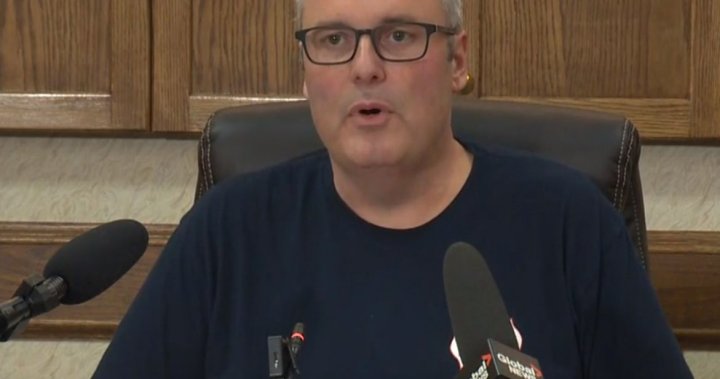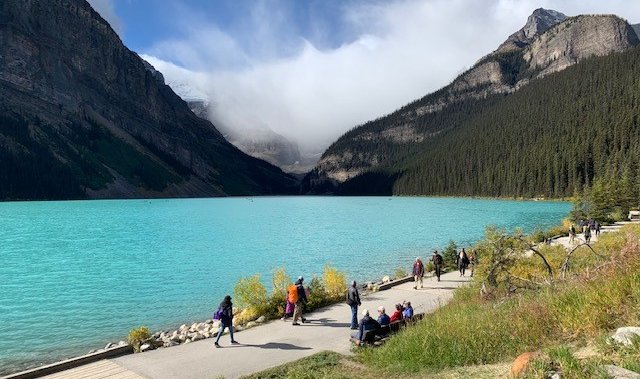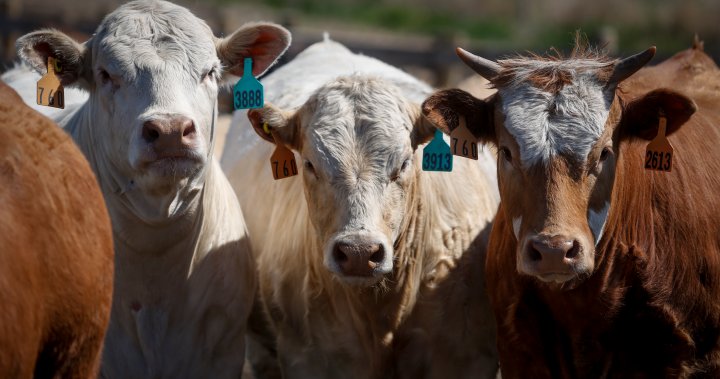Westbank First Nation Chief Robert Louie is cautiously optimistic about how this year’s fire season will play out.
It’s already much less traumatic than this time last year, when theMcDougall Creek wildfire destroyed nearly 200 homes and large swaths of land and trees.
“But we’re not out of the woods yet,” Louie said. “It’s only mid-August.”
The latter half of August has often been when wildfires have the worst effects in the Okanagan. Before McDougall Creek, there was the 2003 Okanagan Mountain Park wildfire, which had previously been unprecedented.
“When you get into your 70s, where I am right now, I’ve seen some things happen in the past but I did not expect 50 or 60 years ago, for example, that we’d be looking at this devastation from fires,” Louie said.
“It’s reality, and it’s almost expected, and it’s only getting worse. We’ve got to do what we can to deal with the environment to protect it, and that takes the whole country to work together in that regard.”
West Kelowna Fire Chief Jason Brolund is also focused on how to protect his community amid an ever-changing landscape. He made international headlines last year when he traveled to New York to speak at a United Nations conference on climate change, encouraging world leaders to take action.
He’s still hoping for that change.
“Our way of thinking is it’s not right to call these once-in-100-year events,” Brolund said.
“They’re not because of a change in climate. So that’s forced us to be more prepared, and it’s forced us to, you know, have conversations with the public about things they can do around their homes to be ready. I don’t think it will be 100 years before we experience another one here.”
FIRE PREPARATION
While a changing climate and more regular fires may seem daunting, Louie said there are lessons from thousands of years of history that can help mitigate the risk in the years ahead.
“What we’ve been doing now for many years in our cultural practices is a lot of burns. We’ve been doing that for centuries,” he said.

Get daily National news
Get the day’s top news, political, economic, and current affairs headlines, delivered to your inbox once a day.
“Way before the non-natives came to this land, our peoples were looking after the lands and mitigating what we could… this is something we’ve instituted in our forestry lands, and we’ve done that on other lands, where they’ve allowed us to come in and do burn mitigation.”
In the small Central Okanagan town of Peachland, the benefit of that work has already been realized, he said.
“Our fellows were contracted to do forest mitigation. We cleaned up a lot of the lands and it saved many dozens of homes that could have gone up had the cleanup had not happened.
“We’re very proud of that so I think we’ve shown that from our traditional ecological knowledge and fire mitigation and practices for many thousands of years has paid off.”
Louie said he’s spoken to provincial and national leaders about the need for this practice.
“You need to wake up, you need to do continual mitigation to prevent the forest fires. It’s, it’s a fact of life,” he said.
“Now, with climate changes, the heat waves that we’ve got, the droughts and occasional floods and so forth, there has to be a lot of work in that regard. We’ve done our best to encourage governments to say, ‘Wake up, do this mitigation.’ It will help save lives, and it will certainly help burning of homes and go a long ways to making our communities safer.”
Brolund says that work needs to be done closer to home, and he’s heartened to see people getting the message.
“Every load of cedar hedges that I see go to the landfill is positive,” Brolund said.
“It means that someone has taken this to heart and has done work to improve the survivability of their home in a wildfire. So, you know, the increased profile, the increased understanding of fire, smart, of what it means to be evacuated, of, you know, getting prepared for the next one. Those are all positives.”
FireSmart practices are something Wilson’s Landing Fire Chief Paul Zydowicz is thinking a lot about these days. He and 12 of his fellow firefighters lost their homes when the McDougall Creek wildfire tore through their neighbourhood and now he’s rebuilding.
“My house was fairly well FireSmarted but there’s definitely things that I could have done better, which obviously will be corrected on this one,” he said.
“We have what’s called a wildfire covenant here, so all of the exterior features of the house need to be fire resistant, which my house was, but unfortunately, the deck wasn’t. I don’t know this for a fact, but I think the reason the house burnt was probably the deck.”
He said people need to be aware of what’s flammable near their homes. Firesmart.bc.ca has the greatest insights for homeowners but it’s also common sense.
“The main thing is just try to separate your house from flammable,” Zydowicz said.
“Your house will not catch from a forest fire 300 metres away. It’s going to catch from the hedge that you have next to your house. It seems almost too simple but it really gets that simple. If you can prevent your landscaping from burning, the chances are better your house won’t burn.”
LESSONS LEARNED
There are many lessons to be taken from individual fires on fire behaviour, keeping homes safe and forest management.
These days, however, one West Kelowna city councillor is focused on people, and how they were taken care of when the fire displaced thousands in a matter of hours.
Coun. Rick de Jong was horrified when he realized people were sleeping in their cars for days, if not weeks, on end, awaiting support. He called for change in the weeks after the fire was under control and continues to call for it today.
“It was utter chaos as residents in West Kelowna were being forced out of their homes and coming here to register for emergency services,” he said.
“But boy, have we learned a lot in the last year and we’ve seen a lot of changes.”
De Jong said the the province has come forward and made changes to the Emergency Social Services registration system.
“You can now register online. They are now giving you flat dollar amounts so that you can spend it as you need, versus just a voucher to go to a hotel.” he said.
Dispersing help looks different locally as well.
“Within the Regional District with the emergency management program, they have now assessed different locations across various communities covered through the Regional District Emergency Management Program for emergency centres so they’re not making that decision on the fly in the heat of the battle,” he said.
“Centres have identified people within each of the communities, including here in West Kelowna, who have been trained on what’s going to be needed if a centre is needed.”
That means it’s simply a matter of making a call, and everyone involved will know what needs to be done to more ahead successfully.
“So what happened last year when the wheels essentially came off the bus should not happen again,” de Jong said.
“We let our residents down last year, and we let down our volunteers who stepped forward to try to make this Emergency Social Services program work. I think the structure that’s in place today and the planning that’s going on today are going to support both our volunteers who are going to step forward to help those in need and those at the time of crisis.”




